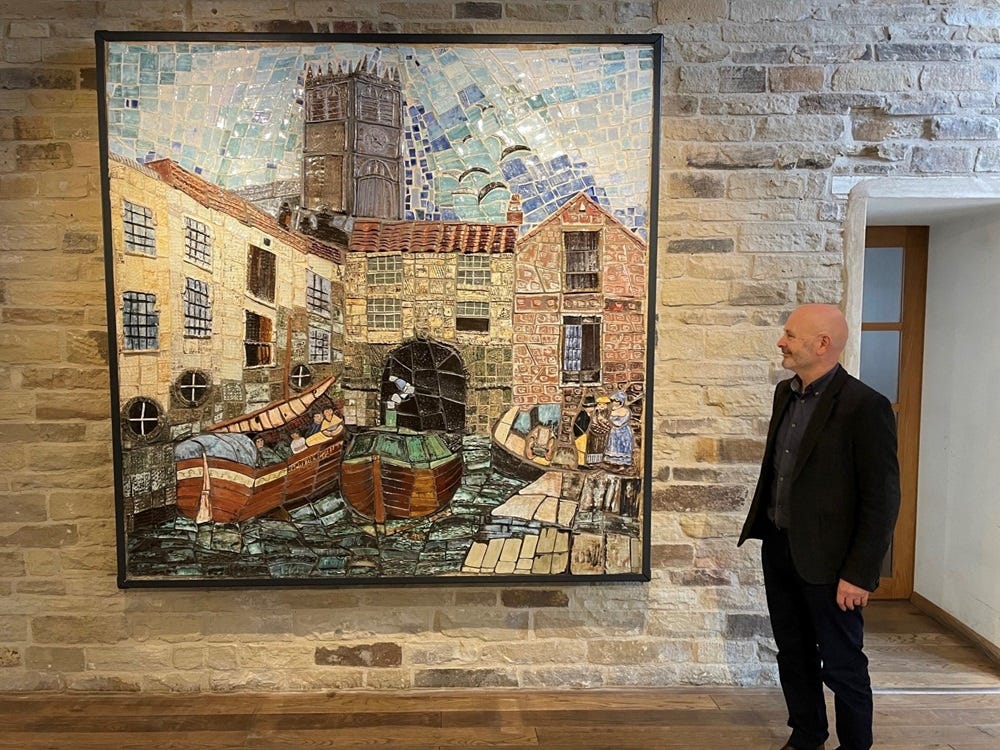Mural marks a find for Bradford's industrial past
The mural by Bauhaus-trained ceramics artist Grete Marks had been lost behind a false wall for decades

RELICS of Bradford's industrial past turn up in the unlikeliest of places, but we're not talking about machines or abandoned workshops; no, we're talking about its encapsulation in public art.
History glares back at us from such artifacts, demanding we acknowledge the days of yesteryear and remember what was; all the more so, when the art itself was previously all-but lost.
Chance takes a turn; sometimes what was forgotten is unearthed. So it's proved for a historic ceramic mural that was discovered in a building used by a local housing association.
The six-foot mural was created in the 1960s by artist Grete Marks. The German Jewish ceramic artist, who trained at the Bauhaus in Weimar, fled the Nazis and came to England in 1936, settling in Stoke-on-Trent, Staffordshire.
Marks was later commissioned to design the mural for the entrance to the Central Housing office building in Bradford's Forster Square. It depicts the square as it appeared over a century ago.
Back then, Bradford's urban centre was still connected to Britain's canal network, but the city’s are long-since gone; buried and covered over much like the beck (stream) that gave this West Yorkshire city its name.
The beck, at least, still flows, culverted beneath the city's streets. The 'broad ford' that became 'Bradford' is situated near present day Church Street, not far from the city's cathedral.
The artwork, originally based on a Victorian watercolour by Neil Stuart Crichton, captures the canal basin and Bradford Cathedral, reflecting the city's rich industrial past. It's a stylised – and dare we say sanitised image – of course. The canals were infamously polluted water courses; filthy and toxic.
The mural was discovered behind a false wall by employees of housing association, Incommunities. It was then stored in a warehouse for more than a decade, before it was brought back into the light of day. By then, it was in need of extensive restoration.
Fiona Hutchinson, a renowned ceramics restorer, spent 12 months bringing the mural back to life.
Usually known for her work on much smaller pieces, she took on this large-scale project with dedication and care.
“It’s certainly been a challenge,” Hutchinson said. “But the more I worked on the piece the more I came to love it and appreciate the huge amount of work, both physical and mental, that Grete Marks put into its creation.
“It has been an honour to restore this extraordinary piece to its former glory, and I am delighted to see it finally on show for the public to enjoy once more.”
Marks' work has found a new home at Salt’s Mill, in the Saltaire World Heritage Site, where it was formally unveiled in October 2024.
The piece is housed at the entrance to Salt’s Mill. Bradford firm Iron Octopus designed a custom structure to display and frame the mural in its new setting. Appropriately, perhaps, there are still canals here; a reunion of a kind
“We’re delighted that the mural has found a fitting home at Salt’s Mill, where it can be appreciated by many for years to come,” said Paul Egan, head of property services at Incommunities.
“We were fortunate to find this important piece of Bradford’s heritage – it was uncovered at one of our buildings in Bradford city centre just before we were set to move out.
“It’s great that it has now been fully restored and will be on display for the community to enjoy.”
MC



